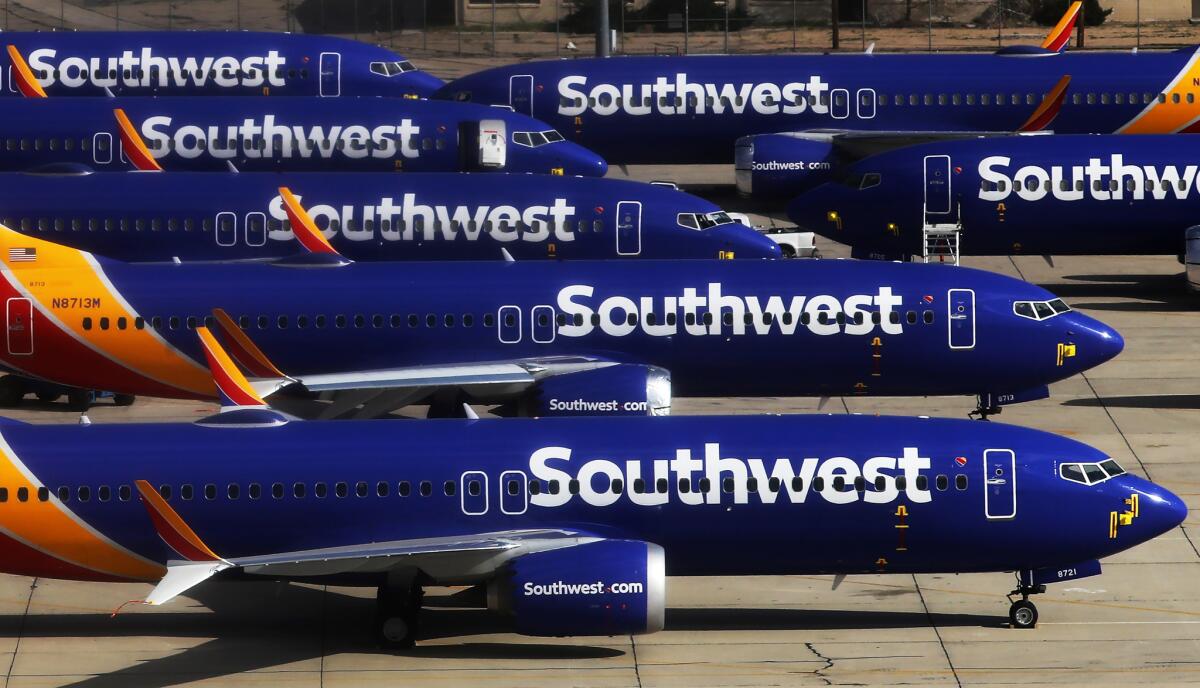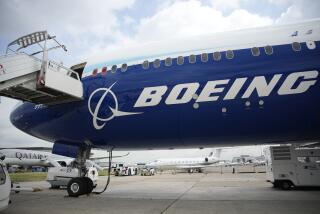Boeing will temporarily slow production of 737 Max planes

Boeing will “temporarily” cut production of 737 Max planes as the company continues work on a software upgrade to the flight control system implicated in two fatal crashes, Boeing’s chief executive said Friday.
By mid-month, the Chicago aerospace giant will reduce production of its 737 Max planes from 52 per month to 42 per month, Boeing CEO Dennis Muilenburg said.
He said the rate change would “accommodate the pause in Max deliveries” and “prioritize additional resources to focus on software certification and returning the Max to flight.”
Additionally, Muilenburg said he has asked Boeing’s board of directors to establish a new committee to review the company’s airplane design and development policies and processes.
“When the Max returns to the skies, we’ve promised our airline customers and their passengers and crews that it will be as safe as any airplane ever to fly,” he said.
The company’s 737 Max airplanes also have another software problem — one that is unrelated to the flight control software at issue in the two crashes, Boeing said.
The company did not immediately respond to questions about what aspect of the plane is controlled by this software and when the problem was discovered. The Washington Post, citing two unnamed officials, said the software affects wing flaps and other flight control hardware and as such is classified as “critical to flight safety.”
The newly reported problem is “relatively minor” and will be fixed as part of a larger planned update to the 737 Max’s flight control software system, Boeing said in an emailed statement. It said that update must still be approved by the Federal Aviation Administration and will be finalized “over the coming weeks.”
Boeing said it discovered the additional software problem during testing.
The company’s flight control software system has been under intense scrutiny since two 737 Max planes crashed shortly after takeoff within a five-month period — a Lion Air flight in Indonesia in October and an Ethiopian Airlines flight in March. The crashes killed everyone aboard the planes, a total of 346 people.
On Thursday, a preliminary report released by the Ethiopian government said that the Ethiopian Airlines jet suffered from faulty readings by a key sensor, and that pilots followed Boeing’s recommended procedures when the plane started to nosedive but could not avoid crashing.
Those findings draw the strongest link yet between the Ethiopian Airlines and Lion Air crashes.
Both planes had an automated system that pushed the nose down when sensor readings detected the danger of an aerodynamic stall, and it appears that sensors malfunctioned on both planes.
Boeing has acknowledged that in both cases, the automated system known as the Maneuvering Characteristics Augmentation System, or MCAS, activated based on wrong information from a faulty sensor. The MCAS is designed to push down the plane’s nose if it seems too high and is putting the plane at risk of stalling.
Muilenburg said Thursday that a new software update would prevent future incidents. “It’s our responsibility to eliminate this risk,” Muilenburg said in a video statement. “We own it, and we know how to do it.”
Boeing’s 737 Max planes have been grounded worldwide since the Ethiopian Airlines crash, pending the software fix.
The Associated Press was used in compiling this report.
Twitter: @smasunaga
More to Read
Inside the business of entertainment
The Wide Shot brings you news, analysis and insights on everything from streaming wars to production — and what it all means for the future.
You may occasionally receive promotional content from the Los Angeles Times.











